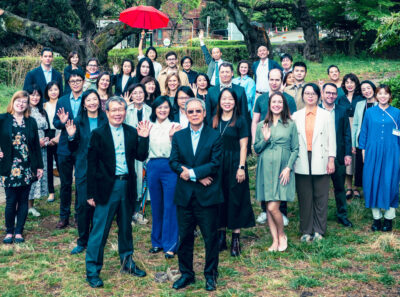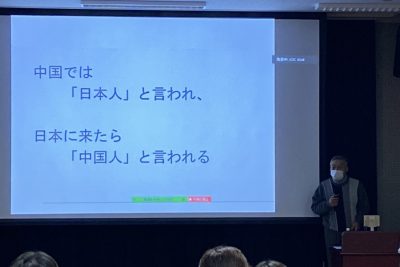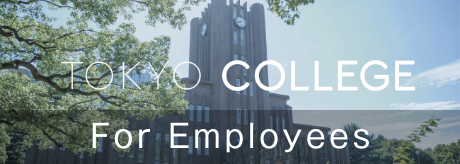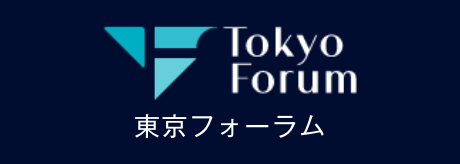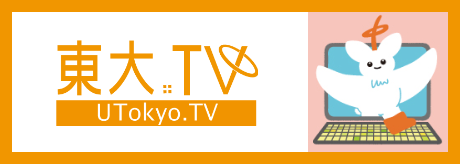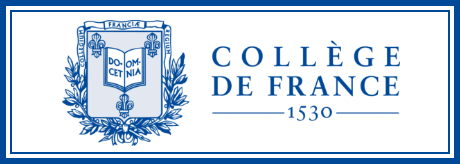Communication during the Coronavirus Pandemic

In a time of pandemic crisis, language issues are central. We linguists question how to best inform citizens in multilingual societies in order to foster better international cooperation in a global world.
To demonstrate the impact of language during a pandemic, I would like to share a scene from the university city Tübingen. Below is an image from the small Neckar Island in front of the famous Hölderlin tower – the site of the poet Friedrich Hölderlin’s (1770-1842) long retreat in an epoch when cholera was dangerous.
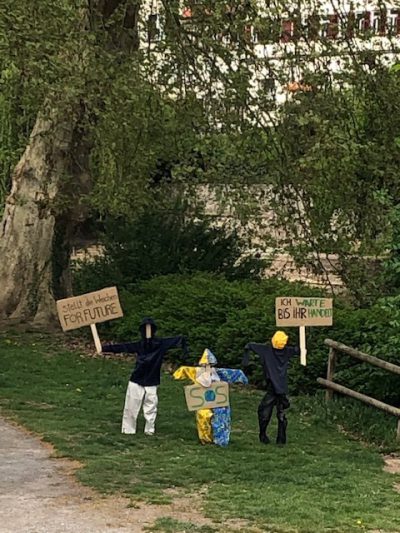
The photograph above features an installation across from Hölderlin’s tower. This local response from young people to a worldwide emergency health situation may be viewed as a sign of our times. Through its use of German and English, the bilingual installation is at once a local and global request for action and a clearly articulated plan for the future. “Stellt die Weichen - for Future” translates to ‘please act for the future’ and “Ich warte bis ihr handelt” means ‘I am waiting until you do something.’ A self-explanatory “SOS” sign stands in the middle.
This serious yet playful installation aims to modify the world in post-Corona times. It shows us how students simultaneously document their political activities and try to contribute to the construction of the future. At the same time we can interpret this as Neudeutsch Newspeak or Denglisch German-English – a mixture of German and English. The figures evoke death and a clown, suggesting that communication during the Coronavirus pandemic is a pressing issue.
Experiencing a pandemic through the lens of linguistics
As I write this blog for Tokyo College, I would like to quote my colleague Andrew Gordon from Harvard, who mentioned that we are “living in truly abnormal times”. For me, the jump to “abnormal” began in March, as I was preparing my next lecture for Tokyo while in Tübingen. All of sudden Tübingen, an old university city, became a Coronavirus hot-spot within Europe. Before that time, there was a strong opinion expressed in German media that the disease should concern primarily Chinese people or those with close contacts in China.
After the sudden explosion of cases in the neighboring countries of Italy and Austria, a cluster of Coronavirus cases arose in our university hospital. The restrictions, some of which cut deeply into freedoms we are very used to, included regionally varying social contact rules, a somewhat strict closure of various businesses, and the prohibition of events. However, life remained bearable for most citizens. Tübingen offers high quality medical services within a small, walkable city near an expansive forest.
Though I eventually experienced the height of the pandemic in Tübingen, I was living in Tokyo in early Spring, as Coronavirus developed into a global problem. My stay at Tokyo College enabled my research to get fully underway and the current health crisis has introduced unexpected layers to the project, which explores the position of Japanese in the world and its contact with other languages.
Japanese is a super central language, an important contact language for most languages in the world (Abram de Swaan, 2001). It is not only taught at most universities in the developed world but it is present in many settings outside of Japan, such as restaurants, media, tattoos, etc. Several shops in Tübingen have Japanese names and during the Corona lockdown, all of them had to close. Ribinguruumu, or ‘living room in Japanese,’ is a popular pub for young people in town, near the restaurant Kadoya, which means ‘restaurant at the gate.’ Not far from the old marketplace we have a design shop called Kami, or ‘the part, where something begins, paper, hair, regional lord, spirits, god,’ where young families buy goods for their household.
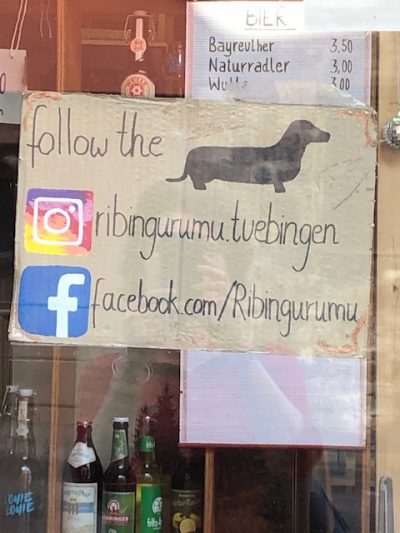
Japanese words for shops may be abstract but medical communication can be very concrete. Initially, we viewed the Coronavirus as a serious threat to the elderly population rather than to children. Suddenly, this understanding changed dramatically as an illness associated with the Coronavirus was endangering children. This illness, called “Kawasaki Syndrome”, was first observed in Paris in connection with Covid-19. Due to its Japanese name, local parents approached me with many questions about the disease. As a Japanologist, it was assumed that I could provide information about its symptoms and treatment. I am often asked to explain Japanese concepts, no matter how unrelated they are to my field of study. Finding myself in this position due to an unfamiliar Japanese medical term showed me once again the impact of Japanese loan words in European languages.
How do public bodies inform us in dangerous times?
Though words from other languages pervade our environment, we should ask ourselves if we do enough for a multilingual understanding of the current situation and question how those living in our communities get information in such difficult times. While in Tokyo, I could only meet with people on the street and ask them to compare Japanese and German news. The Japanese news discussed the effectiveness of wearing face masks much earlier than the German media. I found the Japanese solution to using masks from early on more reasonable. In this case, understanding a foreign language allowed me to receive information from two different governments and change my personal actions accordingly.
The communication of public health information is a key aspect of the containment of pandemics. In fact, social media has played such a large role during the pandemic that it has been said to be accompanied by an “inflation of news”. Though many populations do not have access to sufficient reliable information, they are simultaneously being swamped with misleading information shared through social media. That leads us back to the question of European language policy. Do we translate policy and information from other countries enough to avoid misleading fake news?
Where are the cultural and linguistic barriers in our society? Within the university city of Tübingen, our population is very international and we must be aware of the fact that information is language dependent. These questions of language and information communication are based on a brief lecture I gave at Tokyo College on language policy, which attempted to connect my own research project to the themes of this collaborative undertaking.
Language and cultural barriers resulted in negative stress effects on our East-Asian research department at Tübingen University. Some Chinese students and researchers living in Tübingen reported about discriminations against Asians and in response, many initiatives were started to protect them. For me, this experience was eye opening. Many of the topics I had studied, such as hate speech and discriminatory language, had transformed from abstract entities in written language to burning topics developing through face to face communication.
Is health information as diverse as our societies are?
The pandemic situation has brought the danger of linguistic inequalities to the surface. If there is some fear or “angst” of the pandemic in society, the language policy of official institutions should help prevent misinformation and language barriers. These language issues may compromise the timeliness and the quality at which public health information is accessible to linguistically diverse population on local levels. German institutions should be well aware of the fact that not everybody can speak or read German in Germany and provide thorough information not only in European languages but also in other languages.
More than 50% of inhabitants within Stuttgart, the capital of our state, have a Non-German language background. The state provides key information online in English, French, Italian and Polish, which does not cover all official languages of the EU, and the city Stuttgart added Arabic, Farsi, Kurdish, Russian, Tigrinya and Turkish.
Still, this online information offered in other languages is not accessible to several populations groups with limited access to online resources. Furthermore, the current situation shines a light on the lack of translators and inadequate multilingual information available during the process of treatment. Public health professionals agree that, during an epidemic, the availability of timely, high-quality information is vital, not only for the general public but also health professionals and decision makers at all levels. As a further critical point, I will mention that proper information was not accessible in the local dialects as it was immediately the case in Wuhan, China. Baden Württemberg’s self-designated slogan is “Wir können alles außer Hochdeutsch” or ‘We can do everything except speak standard German.’ In this case, Hochdeutsch may be difficult because of using Latin medical terms like “atypische Manifestationen” or ‘atypical manifestations’ - not even every elaborated native speaker of Hochdeutsch, or standard German, can understand it. Of course, at least in a passive way, most of our inhabitants born in Baden Württemberg would understand standard German but in our societies we should take into account that we have people with different language backgrounds and language abilities. As clear explanations are key to fighting coronavirus, plain language information for people with restricted German knowledge is very much needed.
Official institutions link online visitors to the UN and to the Robert Koch Institute sites for more sophisticated information. The World Health Organization’s dedicated information website on the novel Coronavirus disease, for instance, is available in the six official UN languages: Arabic, Chinese, English, French, Russian and Spanish. The information is directed at member states, who are tasked with localizing relevant information for their populations through their national health authorities.
The Robert Koch Institute, the central German health body, publishes information in German and English. The Central German Government with the Federal Commissioner for Migration, Refugees and Integration as well as the Federal Ministry for Health and Ethno-Medical Center have started to broaden the language map. After some delay, they now offer general advice in European and many Non-European languages:
| English/Englisch | Türkçe/Türkisch | Polski/Polnisch | Français/Französisch | Italiano/Italienisch |
| ελληνικά/Griechisch | Hrvatski/Kroatisch | Română/Rumänisch |
| Magyar/Ungarisch | فارسی /Farsi | دری /Dari | 中文语言/Chinesisch | Español / Spanisch |
| عربي/Arabisch | Tiếng Việt/Vietnamesisch | Shqip / Albanisch | Русский / Russisch |
| ትግርኛ / Tigrinja | Česky / Tschechisch |
Unfortunately in this case, some very important as Asian languages, like Japanese, are missing in Germany. In Austria, the websites refer to Japanese – probably due to the high amount of visitors from Japan.
While state institutions are rather late in providing a multilingual presentation of information, companies are more proactive by producing translation apps or translation services. Some German health insurances have also translated information regarding health issues into multiple languages.
As for a concrete situation, I observed the conflict a doctor faced when deciding whether to make an exception and let two people into a patient’s examination room though corona regulations only allow one. In this case, the German speaking daughter of a Turkish patient wanted to accompany her mother and act as a translator. As the medical situation seemed to be serious, the doctor accepted two people in order to ensure clear communication.
In relation to the Tokyo College project on Corona, what I find most notable is the connection of linguistic spaces to local and global multiple language identities – how fluid and mutable are they in emergency and in conflict situations. Some new multilingual initiatives have developed during these abnormal times, which will hopefully be long lasting and further refined going forward. What we need to know about health should be translated into many more languages at state and local levels. We must take this one step further and not only translate but explore linguistic questions in relation to society. Within academic institutions, we can illuminate and examine the impacts of welfare linguistics for the future.


